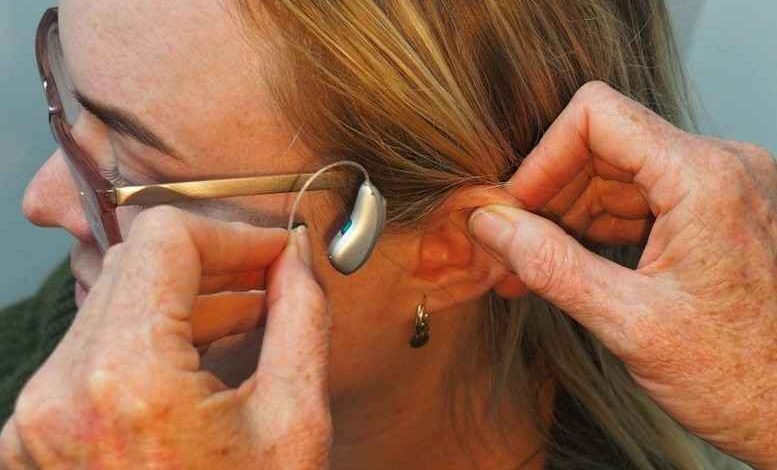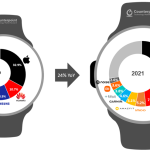Effective Strategies for Dealing With Partial Hearing Loss

Partial hearing loss, a condition where individuals lose part of their hearing ability, is not just a mere inconvenience; it’s a significant health concern that affects millions globally.
According to the Hearing Loss Association of America, around 48 million Americans have some difficulty with hearing. This could be in the form of either complete, partial, permanent, or temporary deafness.
In this article, let us look at the nature of partial hearing loss and some of the intervention strategies that exist.
What is Partial Hearing Loss?
Partial hearing loss, distinct from total deafness, involves a reduction in hearing capacity. It’s characterized by difficulty in perceiving certain frequencies or understanding speech, especially in noisy environments. Early signs often include needing to turn up the volume excessively or asking people to repeat themselves.
Unlike total deafness, where individuals lose their hearing entirely, partial loss can often be mitigated with appropriate interventions.
The causes of partial auditory loss are varied. For instance, age-related deafness, also known as presbycusis, affects one in three people between 65 and 74 in the United States.
Loud noise exposure is another critical factor, with the World Health Organization (WHO) estimating that more than one billion people are at risk of deafness due to unsafe listening practices.
Medical conditions like diabetes or hypertension, genetic factors, and certain medications, notably ototoxic drugs like Tepezza, used for treating thyroid eye disease, can also contribute to partial deafness. In fact, several individuals have come forward in recent times to file Tepezza lawsuit cases.
TorHoerman Law notes that some of the side effects of the drug include not just hearing loss, but also high blood sugar, infusion reactions, and muscle spasms.
What Interventions Exist For Partial Hearing Loss?
Early detection and diagnosis are key to managing partial auditory impairment. Audiologists and ENT (ear, nose, and throat) specialists play a crucial role in this process, conducting various auditory tests and evaluations.
The importance of regular ear check-ups, especially for those at higher risk due to age, medical conditions, or exposure to loud noise, cannot be overemphasized. This is because the earlier auditory impairment is detected, the easier it may be to treat.
Currently, effective interventions fall into two main categories: medical and surgical options.
Medical Interventions
Medications play a vital role in treatment, especially when it’s caused by underlying health issues. However, it’s important to note that pharmaceuticals are more effective for specific types of hearing loss, such as those resulting from infections, inflammation, or certain diseases. They aren’t as effective for age-related hearing loss or noise-induced loss.
According to the American Academy of Otolaryngology–Head and Neck Surgery, oral steroids are commonly prescribed for SSNHL, and early treatment is crucial for the best outcomes.
In that context, corticosteroids are often the first line of treatment for sudden sensorineural hearing loss. SSNHL is a type of deafness that occurs rapidly and typically in one ear. Corticosteroids, like prednisone, can reduce inflammation and swelling in the ear, potentially helping to restore hearing.
Likewise, for certain types of auditory impairment, such as those related to blood circulation issues in the inner ear, medications that improve blood flow may be prescribed. These drugs aim to increase blood circulation to the inner ear, potentially improving hearing function.
Surgical Interventions
Surgical interventions for partial deafness are often considered when more conservative treatments, like hearing aids, are not effective or suitable. These surgeries are designed to repair or bypass damaged parts of the ear, improving auditory function.
In tympanoplasty, surgeons typically use a graft (often taken from the patient’s own tissue) to close the hole in the eardrum, which can improve hearing and reduce the risk of infections. The success rate of tympanoplasty varies between 60% – 90% for adults and 35% – 94% for children.
Similarly, stapedectomy is a surgical procedure for otosclerosis, a condition where the stapes bone in the middle ear becomes stuck and cannot vibrate in response to sound, leading to hearing loss. During a stapedectomy, surgeons remove part or all of the immobilized stapes bone and replace it with a prosthesis.
A stapedotomy is a variation of this procedure where a small hole is made in the stapes bone and a tiny prosthesis is inserted. The National Health Service (NHS) UK reports that these procedures improve hearing in about 90% of cases.
Conclusion
Dealing with partial deafness is a multifaceted challenge that requires a comprehensive approach. It’s no surprise that early detection and proactive management are key to preserving ear health.
This means regular consultations with audiologists and ENT specialists, along with appropriate interventions. Such steps can make a substantial difference in the quality of life for those experiencing partial auditory impairment.
It’s also important to emphasize the role of prevention, including protecting ears from loud noises. Likewise, it’s worth being aware of the potential ototoxic effects of certain medications, such as Tepezza. After all, no one wants to end up with hearing loss because of the medicines they take.






